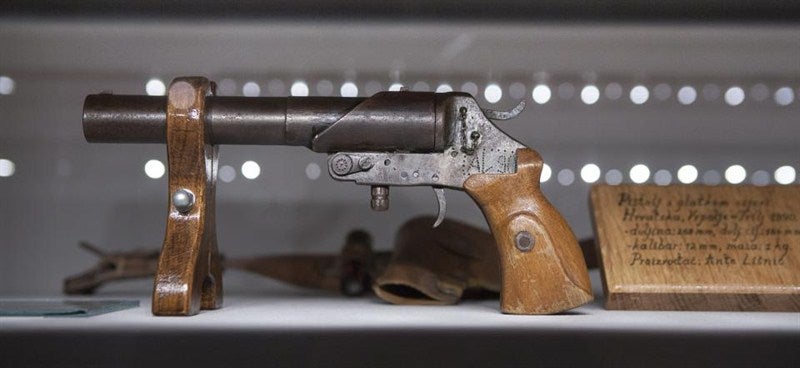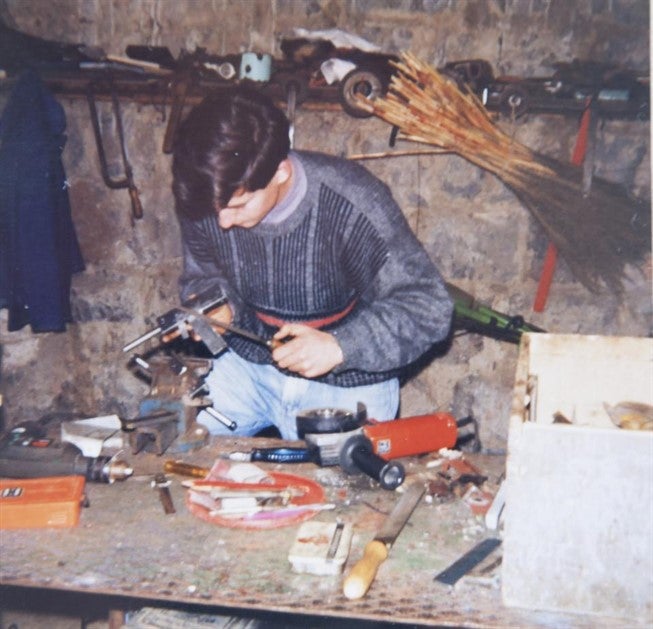In 1991 the Croatian parliament voted to seceded from what was formerly the ‘Socialist Federal Republic of Yugoslavia’, leading to armed conflict between Croatian and Serbian government forces as well as various paramilitary groups formed along ethnic lines. An international arms embargo encompassing all of former Yugoslavia was passed shortly afterwards, leading an under-equipped newly independent Croatia to focus on domestic production of various small arms. On the lower end this included dozens of small workshops operating in rural areas which produced crude weapons for insurgency. Ante Lišnić, a 20 year old working out of his garage in Vrpolje, Trilj, produced various improvised firearms starting from single shot muzzleloading weapons to submachine guns and grenade launchers which were passed on to guerrilla fighters. Examples retained after the conflict ended in 1995 can be seen below.

Above: Small caliber machine pistols.

Above: A small caliber machine pistol with the magazine, like the Australian Owen SMG, positioned above the receiver while the recoil spring shows AK47 influence.

Above: Machine pistol marked ‘M.1992’.

Above: A single shot 12 gauge shotgun pistol.

Above: A single shot rifle/carbine with ‘night vision’ capabilities.

Above: A grenade projector capable of firing a hand-lit bomb 300 meters.

Above: Improvised grenades with grids cut into the bodies, a typical technique used to increase fragmentation.

Above: An example of a modification carried out to an existing weapon, in this case brazing two AKM magazines together to produce one 60 round magazine.

Above: A starting pistol modified into a crude muzzleloading weapon. A barrel fashioned from a piece of iron pipe is attached to the top of a Rhom RG2 .22 starting pistol and positioned so that the vent hole is in line with the touch hole on the underside of the barrel.

All of these weapons were produced working in less than desirable conditions using basic hand and power tools native to most garages and sheds. Although likely suffering in the reliability and accuracy department, all would likely suffice in functioning as a ‘gun to get another gun’. The cottage industry in arms production which Croatia inherited during the breakup of former Yugoslavia is still alive today, as Interpol well know. Guns produced during this period such as the Agram 2000 and Zagi M91 were quickly diverted to the European criminal underworld, recent seizures suggesting that new design and development catering solely to this market is still ongoing.

Above: The Zagi M91 – The British 9mm STEN resurrected with a 90s make over.
 Your Privacy Choices
Your Privacy Choices
